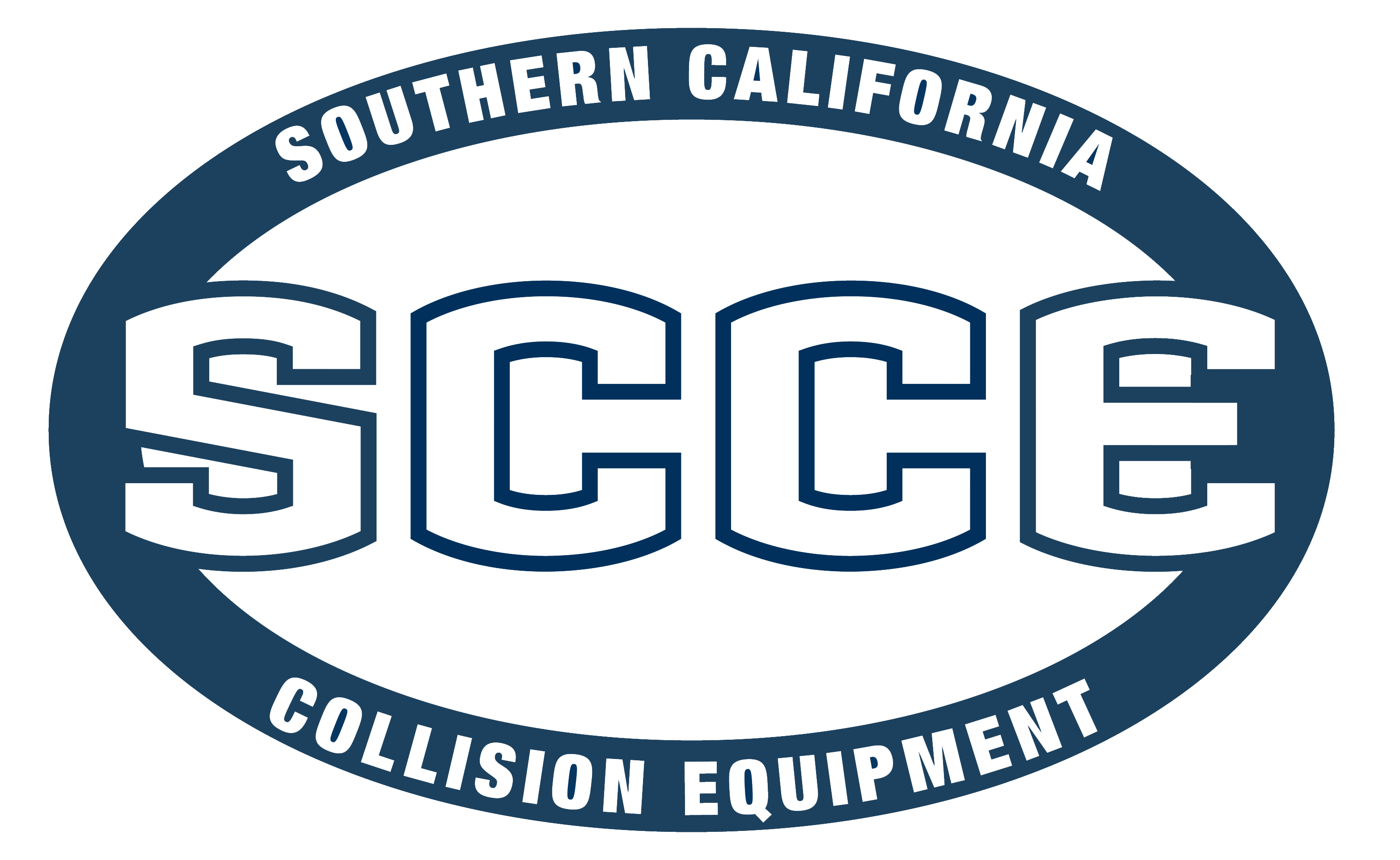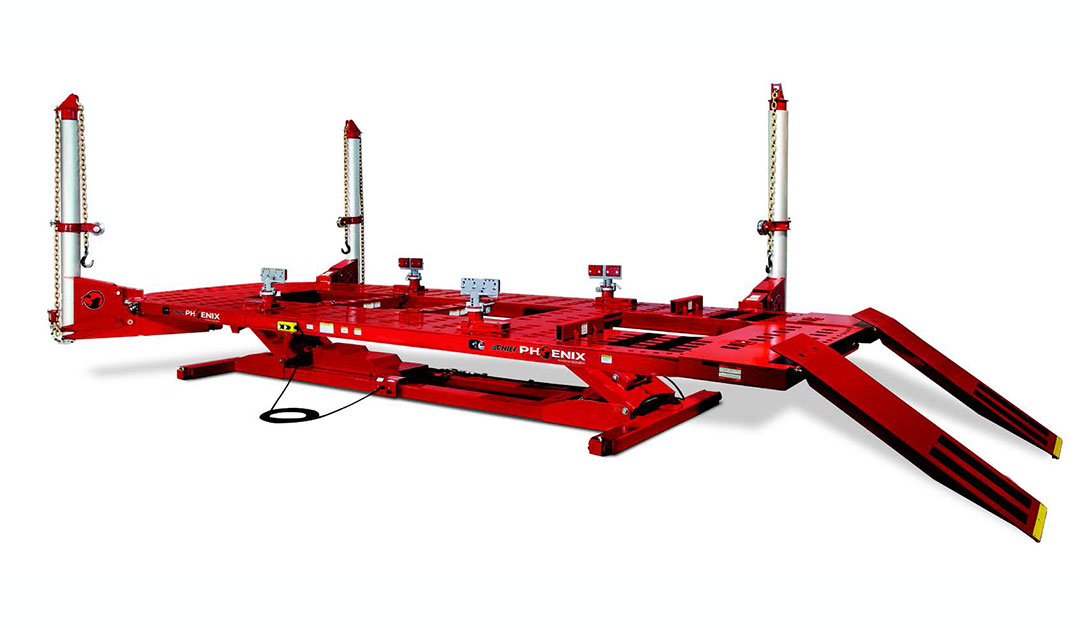Today’s cars and trucks are built to exact specifications, and they require precise repairs. In order to reverse the forces involved in a collision and properly return the vehicle to OEM specs, you may have to pull a frame in multiple strategic locations simultaneously. This is known as “multi-point pulling.” Here are some tips on how to use your frame-straightening equipment to execute a proper multi-point pull:
1. Make sure your frame rack is up to the task.
To create an ideal multi-point frame-straightening setup, you’ll need a full-sized frame rack with at least two pulling towers. The versatility of the towers is key to multi-point pulling. They should be capable of traversing the full perimeter of the rack and come with adjustable collars to provide unlimited pulling angles. Auxiliary rams and down-pull attachments can help you direct force exactly where it’s needed.
2. Measure before each repair
Measuring the entire vehicle upfront helps you compile an accurate estimate and ensures no “hidden” damage goes unnoticed. Timesaving Live Mapping™ systems are capable of measuring the entire vehicle at once, and they help guide you through the setup process by showing where each target should be placed. Be sure to use aluminum collet attachments to fix targets to any aluminum components on new vehicles, since traditional magnetic attachments don’t work with aluminum, and steel attachments could corrode the metal.
3. Anchor the vehicle
To prevent flex during pulling – which can decrease the effectiveness of the pull and further damage the frame – it’s important to anchor the vehicle securely to the frame rack. The four corners of the vehicle’s center section are typically ideal anchoring locations, because they have adequate strength and can be used to control the alignment of the front, center and rear sections. These points also provide natural pivots to pull the front and rear sections back into place.
For multi-point pulling, you may have to add supplemental holding components using Chief’s Structural Holding Package. To see how to properly construct holding points using the vice clamps, surface plate attachments, tubes, turnbuckles, locking wing nut assemblies and bolts included in this package, check out Chief’s Structural Holding video series.
4. Monitor dimensional changes during the repair
During a multi-point pull, the frame may move in multiple directions at once. This is why it’s important to use a multi-point Live Mapping system that can monitor all dimensional changes as they occur. When paired with up-to-date vehicle repair data, the Live Mapping system will show you where the frame is out of place in real time. This helps you make the right pulls the first time and provides assurance that the vehicle is being returned to OEM specs.
With the right frame-straightening equipment, you’ll be able to execute any pull and efficiently repair even the most advanced vehicles on the road.
To learn more about the materials and construction methods used on today’s vehicles, download our Structural Design Technology guide.

